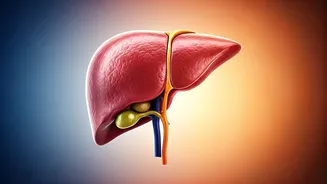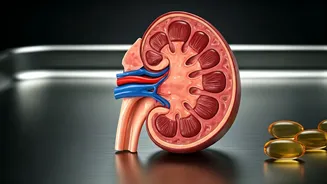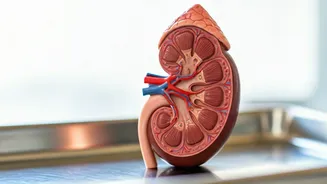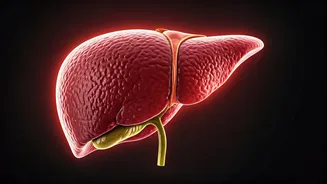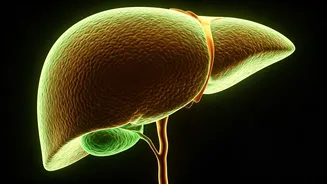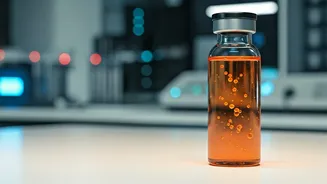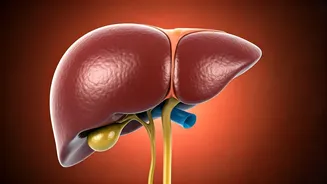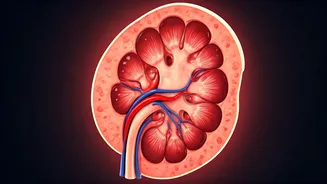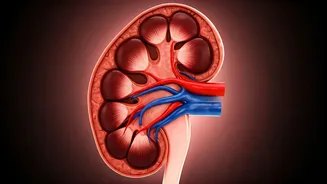Understanding Vitamin D
Vitamin D, crucial for calcium absorption and bone health, is often obtained through sunlight exposure, certain foods, and supplements. However, excessive
intake, often through supplements, can lead to a condition known as Vitamin D toxicity, or hypervitaminosis D. This condition causes a buildup of calcium in the blood (hypercalcemia), leading to various health issues. While Vitamin D deficiency is common, especially in regions with limited sunlight or among individuals with certain health conditions, overdoing it can be just as problematic. It's essential to understand the balance and the potential risks associated with both deficiency and excess.
Causes of Toxicity
The primary cause of Vitamin D toxicity is the overuse of supplements. Unlike sunlight exposure, which regulates Vitamin D production, supplements can lead to a rapid and uncontrolled increase in its levels in the body. Consuming very high doses of Vitamin D supplements over a prolonged period can quickly push the body into a state of toxicity. This is because Vitamin D is a fat-soluble vitamin, meaning the body stores it in fat tissues and doesn't easily excrete excess amounts. Additionally, certain medical conditions and underlying health issues can make an individual more susceptible to Vitamin D toxicity, even with moderate supplement use. Always consult healthcare professionals before taking supplements.
Recognizing Symptoms
The symptoms of Vitamin D toxicity are often non-specific in the early stages, making it difficult to diagnose. Common early symptoms include nausea, vomiting, weakness, and frequent urination. As the condition progresses, the symptoms can become more severe, including kidney problems, such as kidney stones and even kidney failure. Other symptoms include bone pain, because of calcium deposits in bones, and mental status changes, like confusion and irritability. Hypercalcemia, a hallmark of Vitamin D toxicity, can also lead to heart problems, as high calcium levels can interfere with heart function. Recognizing these symptoms early is critical for timely intervention and avoiding severe health complications.
Diagnosis and Testing
Diagnosing Vitamin D toxicity involves a combination of assessing symptoms and performing blood tests. A healthcare provider will usually start with a review of a patient's medical history, including supplement use and diet. Blood tests are crucial for measuring the levels of Vitamin D and calcium in the blood. Elevated Vitamin D levels, specifically above the recommended range, confirm the diagnosis. The healthcare provider will also evaluate the patient’s kidney function through tests, as high calcium levels can impact kidneys. Regular monitoring and follow-up tests are often needed to track the effectiveness of treatment and ensure that Vitamin D levels return to a healthy range. Accurate diagnosis and consistent monitoring are crucial.
Natural Reversal Strategies
The most important step in reversing Vitamin D toxicity is to stop taking Vitamin D supplements immediately. Once supplement use is discontinued, the body's Vitamin D levels will gradually start to decrease. Alongside stopping supplements, staying well-hydrated is crucial to support kidney function and help flush out excess calcium. Drinking plenty of water is essential. Dietary changes can also assist in reducing calcium levels. Avoid foods rich in calcium, such as dairy products and calcium-fortified foods, during the recovery period. Increasing the intake of foods high in magnesium, which helps regulate calcium levels, may be beneficial. Consulting with a healthcare provider is essential, as they can recommend the best course of action.
Medical Interventions
In severe cases, medical interventions may be necessary to lower Vitamin D and calcium levels and protect the kidneys. The primary medical approach involves intravenous (IV) fluids to rehydrate and help flush out excess calcium. Medications, such as corticosteroids and bisphosphonates, may be prescribed to reduce calcium levels in the blood. In extremely severe cases, where kidney function is severely compromised, dialysis might be needed to remove excess calcium and waste products from the blood. The specific medical treatment plan will be based on the severity of the toxicity and the patient's overall health condition. Regular monitoring by healthcare professionals is essential during treatment.
Preventing Toxicity
Preventing Vitamin D toxicity starts with responsible supplement use. Always consult with a healthcare professional before taking Vitamin D supplements to determine the appropriate dosage based on individual needs and health conditions. It's crucial not to exceed the recommended daily allowance. Follow the advice of a healthcare provider. Regular blood tests to monitor Vitamin D levels, especially for those taking supplements, can help detect potential issues early on. Pay attention to dietary sources of Vitamin D and sunlight exposure, remembering that these are generally not primary causes of toxicity unless extremely excessive. Maintaining a balanced intake and consistent monitoring is key to preventing overconsumption and its associated risks.
